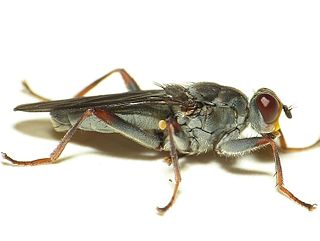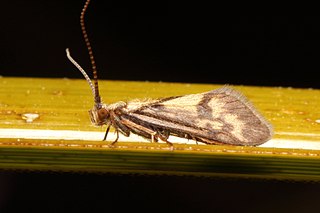ISO 80000 or IEC 80000 is an international standard introducing the International System of Quantities (ISQ). It was developed and promulgated jointly by the International Organization for Standardization (ISO) and the International Electrotechnical Commission (IEC).
Hemimyzon confluens is a species of ray-finned fish in the genus Hemimyzon. It is known from a single location in the Nam Ngum drainage in Laos, a tributary of the Mekong. The known material suggests a maximum standard length of about 47 mm (1.9 in). H. confluens is threatened by pollution from mining activities and hydro-power development.
Phellodon confluens, commonly known as the fused cork hydnum, is a species of tooth fungus in the family Bankeraceae. It was originally described in 1825 as Hydnum confluens by Christiaan Hendrik Persoon. Czech mycologist Zdenek Pouzar transferred it to the genus Phellodon in 1956. The fungus is found in Asia, Europe, and North America. It is considered vulnerable in Switzerland.
Drakaea confluens, commonly known as late hammer orchid is a species of orchid endemic to the south–west of Western Australia. It is similar to other hammer orchids in that it is pollinated by a single species of male thynnid wasp using sexual deception. The orchid's labellum is similar in shape and scent to a specific species of flightless female thynnid wasp. The species was discovered and collected in 1930 but was not formally described until 2007. It is only known from three areas in the south of the state and has been declared "endangered" by the Australian government and "threatened" by the Government of Western Australia.

Eucalyptus confluens, commonly known as Kimberley gum, is a species of small tree that is endemic to northern Australia. It has smooth, powdery white bark, lance-shaped adult leaves, more or less spherical flower buds in groups of seven, white flowers and cup-shaped to hemispherical fruit. It grows in the Kimberley region of Western Australia and in adjacent areas of the Northern Territory.

Perillus confluens is a species of predatory stink bugs in the family Pentatomidae. It is found in Central America and North America.
Valenzuela confluens is a species of lizard barklouse in the family Caeciliusidae. It is found in North America.
Calligrapha confluens is a species of leaf beetle in the family Chrysomelidae. It is found in North America.

Chrysomela confluens is a species of leaf beetle in the family Chrysomelidae. It is found in North America.
Hydromyza confluens is a species of dung fly in the family Scathophagidae.

Hydromyza is a genus of dung flies in the family Scathophagidae. There are at least three described species in Hydromyza.
Paracymus despectus is a species of water scavenger beetle in the family Hydrophilidae. It is found in North America.
Typocerus confluens, the longhorn beetle, is a species of flower longhorn in the family Cerambycidae. It is found in North America.
Sagotylus is a genus of leaf-footed bugs in the family Coreidae, containing one described species, S. confluens.
Sphenophorus venatus, the hunting billbug, is a species of beetle in the family Dryophthoridae. It is found in Central America and North America.

Acacia confluens, commonly known as wyrilda, is a shrub belonging to the genus Acacia and the subgenus Phyllodineae that is endemic to central Australia.

Conoesucidae is a family of caddisflies in the order Trichoptera. There are about 12 genera and more than 40 described species in Conoesucidae.





